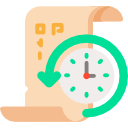Historical Figures in a Different Reality
Leonardo da Vinci Builds a Moon Colony
Blueprints for Low-Gravity Cities
Leonardo adapts Vitruvian principles to lunar regolith, sketching rotating habitats where artificial gravity meets sunlit workshops. He solves dust problems with layered airlocks and feathered filters, inviting you to annotate margins with wilder improvements.
A Workshop Anecdote: The Feather Test
A young apprentice recalls Leonardo dropping pigeon feathers in a vacuum chamber analogue, eyes shining with the same wonder that filled his notebooks. The lesson lands softly: evidence over ego, iteration over assumption, and curiosity beyond horizons.
Engage: Sketch Your Lunar Invention
Grab a pencil or tablet and draft a tool for moon living—perhaps a regolith loom or a light-powered kiln. Share your sketch in the comments, tag a friend for critique, and subscribe to see community designs featured in our next chapter.
Cleopatra in a Neon-Lit Cyberpunk Nile
Fluent in code and contracts, Cleopatra negotiates with bio-tech conglomerates guarding gene-locked seeds. Her strategy mirrors historic alliances, bartering bandwidth for sovereignty. Would you grant her quantum keys, or demand distributed stewardship instead?
Sensors stitch the river’s pulse into a living dashboard—salinity, migration, microplastics—each metric a tributary in Cleopatra’s governance. She turns dashboards into diplomacy, inviting dockside communities to audit algorithms before any policy is signed.
Cast your choice in the comments: partner with citizen coders for transparency, align with green megacorps for rapid scaling, or build a cooperative guild of farmers and hackers. Subscribe to see the winning path shape next week’s storyline.
Nelson Mandela Mediates a Galactic Truce
Mandela arrives with a pocket stone from Robben Island, a tactile reminder of patience. He opens talks by asking each delegation to name something they admire in their rivals, disarming centuries of grievance with measured humanity.


Marie Curie Powers a Solar-Punk City
Curie’s team plants photoreactive hedgerows that store daylight, while transparent shielding and color-coded paths gamify safety. Her mantra persists: measure twice, verify thrice, then celebrate. Would your neighborhood adopt these mindful rituals?
Marie Curie Powers a Solar-Punk City
A journal entry documents a late-night breakthrough: algae-bloom batteries stabilized by mineral lattices. Curie pauses to credit her collaborators, reminding readers how discovery is communal, iterative, and tender with the world it seeks to power.
Genghis Khan as Open-Source Cloud Architect
The Yam Becomes a Packet Network
Inspired by the historic relay system, he deploys edge caches at every outpost and standardizes protocols like stamped couriers. Packet loss plummets, contributors rise by skill, and forks become peaceful fiefdoms trading patches instead of arrows.
Code of the Steppe: Scalable Governance
A living law codex balances freedom and order: consensus for core changes, autonomy for local modules, and rapid response brigades for outages. Comment with the clause you’d add to protect newcomers and prevent gatekeeping.
Pull Request: Your Modular Horde
Ship a tiny tool—log parser, latency map, or onboarding guide—and tag it with a story of how collaboration surprised you. Upvote helpful modules, mentor a contributor, and subscribe to join quarterly community sprints across time zones.
Ada Lovelace Conducts the Dreaming Machines
Ada drafts scores where functions become melodic motifs and constraints shape rhythm. She teaches models to cite their influences like musicians, arguing transparency strengthens beauty. What musical form would your algorithm learn first, and why?
Ada Lovelace Conducts the Dreaming Machines
Mid-performance, a model loops a melancholic cadence. Ada pauses, reads the training notes, and swaps datasets, turning error into revelation. The hall cheers as machine and human find a shared, shimmering key of surprise.


